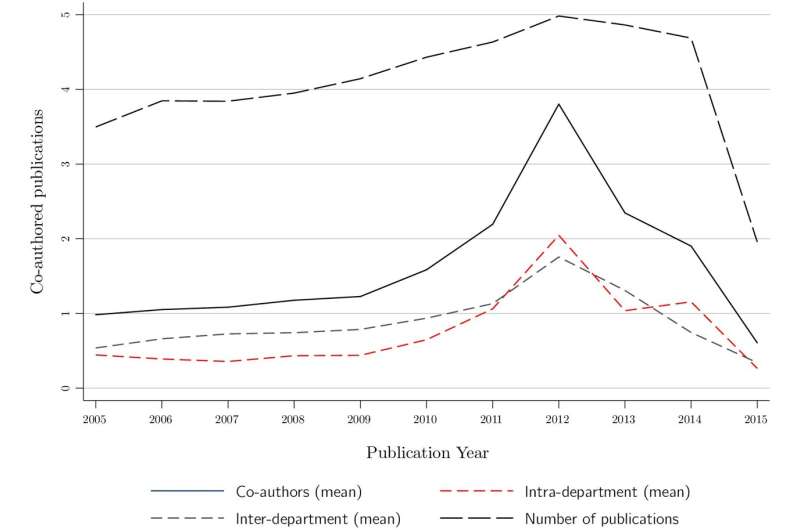Sharing office space increases collaboration among researchers

A new study published in PLOS ONE and co-authored by researchers at the Massachusetts Institute of Technology (MIT) and Portland State University (PSU) provides addiitional evidence that spatial proximity increases cross-disciplinary collaboration among researchers.
The study, co-authored by Arianna Salazar Miranda (Urban Studies & Planning, MIT) and Matthew Claudel (Geography, PSU), examined research publications co-authored by MIT faculty from 2005 to 2015. When campus building renovations caused researchers to suddenly relocate, those who were positioned near each other were more likely to collaborate. The study finds that moving researchers into the same building increases their propensity to collaborate, with the effect plateauing five years after the move. The study also found no evidence suggesting collaborations between co-authors before the move.
In addition to considering co-authorship data, the research team considered the organizational arrangements that could contribute to collaboration, such as the density of researchers, the number of departments and their distribution across buildings, and the affinity of fields hosted in a building.
The disciplines included in the analysis are mathematics, computer science, physics, chemistry, engineering, earth sciences, biology, brain research, health, social science, and humanities.
According to the authors, relocating researchers into buildings with others working in the same or related fields from multiple departments could increase collaboration. Citing related research, Salazar Miranda and Claudel note that physical proximity could promote the development of social ties by providing more opportunities for interaction and communication.
Universities and grant-funding agencies place increasing emphasis on the value of cross-disciplinary research as a way of addressing seemingly intractable issues facing society. Work by researchers like Salazar Miranda and Claudel could inform how public and private sector organizations approach designing and managing workplaces and campuses to foster collaboration.
More information: Arianna Salazar Miranda et al, Spatial proximity matters: A study on collaboration, PLOS ONE (2021). DOI: 10.1371/journal.pone.0259965
Journal information: PLoS ONE
Provided by Portland State University




















